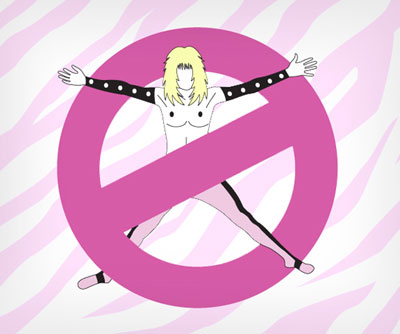
Guitar World recently made a pretty funny list, Eight Steps to Becoming a Legendary Hair Metal Guitarist. Just try to read through this list without thinking of Eddie Van Halen!
Here it is:
From fashion trends to movie remakes, the ’80s are back with a vengeance.
But are neon-colored Wayfarers and tiger-print bikinis enough to bring back the decade’s most recognizable musical period? It’s unclear at this point, but as the Boy Scouts say, let’s “be prepared.”
It’s impossible to think about ’80s rock without vibrant visuals of half-naked dudes prancing around stage wearing more makeup and hair product than a horde of groupies. Even though the period broke almost every unwritten rule of rock and roll, it became one of its most successful sub-genres.
So, what if this current ’80s revival is stronger than we realize and hair metal rises from the ashes like a Spandex and lace-clad phoenix?
You’ll have to jump on the bandwagon and tap/palm mute your way to a record deal. However, being a hair metal guitarist is much deeper than just executing signature techniques. How you look and act is just as important as how you sound.
Below are eight specific rules you’ll need to employ to become the leader of a full-fledged hair metal resurgence.

01. Smile the Entire Time You’re On Stage or Camera
One of glam or hair metal’s original the genre’s first nicknames was “teeth metal” because band members smiled so much on stage. This style of rock was all about playing upbeat songs that focused on girls, cars and, well, being happy. There’s no way you can’t smile if you’re basically the Tony Robbins of rock music.
Performing a song about the best night of your life with a death stare and clenched jaw kills your credibility. Plus, a badass, I’ll-break-your-face-if-you-even-look-me-in-the-eye persona is impossible to pull off while wearing makeup and lace gloves.
Exception: Don’t smile when performing a ballad. Shed a minimum of three tears instead.
02. Guitars Must Have Custom Graphics
By the mid-’80s, if your guitar didn’t display geometric art that utilized every color in the rainbow, you wouldn’t even be allowed to step on the stage of a high school talent show. However, don’t worry if you lack fine-art skills. You can cheat the rule by blinding fans with sparkly neon or color-shifting chameleon finishes.

03. Play a “Super Strat”
Almost every hair metal guitarist played a “Super Strat” (with the exception of the custom Flying-V) for three reasons: Eddie did it, it offered easy access to the whammy bar and it was extremely light-weight.
You may ask, “What the hell did guitar weight have to do with hair metal?”
Everything. Watch an old video or concert footage and you’ll notice the lead guitarist running, jumping, sliding, dancing, crawling, spinning and skipping on stage like a maniac that just swallowed 59 caffeine pills. A heavy axe limits aerodynamics and throws off counterbalance.
 04. Hate Your Lead Singer
04. Hate Your Lead Singer
No explanation needed.
05. Incorporate the Following Techniques Into Every Song:
Transitional Dive Bomb: Instantly executed after the song’s first solo or transition to the chorus, ’80s guitarists were dropping it like it was hot long before Snoop Dog. Although Jimi Hendrix pioneered the technique in the late ‘60s, hair metal popularized dive bombs, instituting a standard presence in almost every recording from the era.
Pinch Harmonics: Pinch harmonics didn’t originate with hair metal but were widely commercialized by the genre. The goal was simple: Create the loudest, highest, most ear-splitting note imaginable. Shortly after they gained popularity, guitarists began combining them with dive bombs to produce an even crazier sequel that resembled a thoroughbred that just inhaled a 10,000-gallon helium tank.
High-String Palm Muting: From “Panama” to “Round and Round,” high-string palm muting is one of hair metal’s most recognizable methods. Muting the G, B and E strings during the bridge gave songs a different kind of sound and complemented the lead singer’s high-pitched voice.
Tapping: Listen to any song from the period and you’ll hear a raging fury of two-handed hammer-ons and pull-offs. Remember, one goal of a hair metal guitarist was to play as many notes per minute as possible. Tapping is an easy way to crank up a solo’s NPMs while looking innovative on stage.
Continue reading their list at GuitarWorld.com.